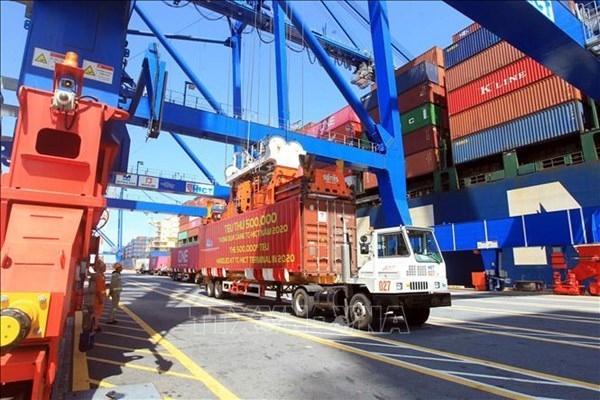
Vietnam's strategy to develop merchant cargo fleet
Latest
 |
| As of December 31, 2021, Vietnam's fleet had 1,502 ships, including 1,032 cargo vessels. (Photo: VNA) |
The Ministry of Transport recently approved a project on Vietnamese merchant fleet development, aiming to handle as much as 10% of the country's exports by 2026, and 20% by 2030, given the current market domination by foreign shipping lines.
A 2021 report by the Vietnam Maritime Administration (VinaMarine) showed that the volume of goods through Vietnam's seaports has grown steadily for many years with an average rate of 13.8%. Despite the negative impact of the COVID-19 pandemic, in 2021, it increased 2% year on year, reaching more than 703 million tonnes. The volume of container cargo was estimated at nearly 24 million TEU, up 6% year-on-year.
As of December 31, 2021, Vietnam's fleet had 1,502 ships, including 1,032 cargo vessels – down from the 1,267 cargo ships of 2016.
In terms of the fleet structure, just a small part of the Vietnamese-flagged merchant fleet are container ships. That means that the fleet is mainly suitable for the domestic or short regional coastal routes. They cannot compete in the international shipping market, where the world is tending to develop larger ships to optimise costs, according to the transport ministry.
Therefore, the project’s main goals include the development of a modern fleet, improvement of efficiency and quality and greater integration into the international market.
The immediate focus is to build a fleet of container ships to work in the Asia-Pacific, with an objective to gain operational experience and set the foundation for long-haul trips in the future.
In recent years, the country's ports have been developed considerably in size, and are now able to accommodate the world's largest ships.
























